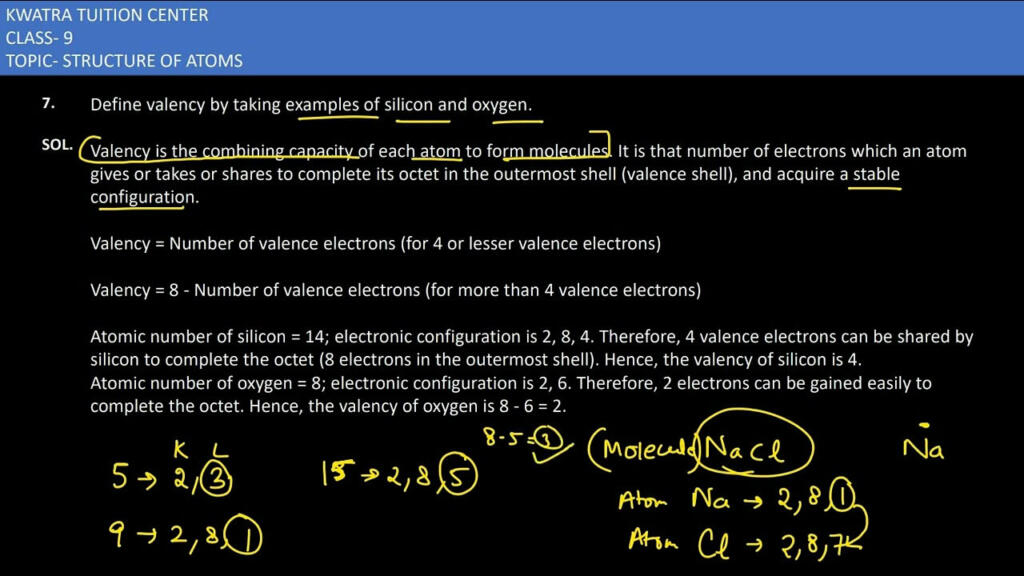Define Valency by Taking Examples of Silicon and Oxygen
The combining power of an element is determined by its valency, a fundamental concept in chemistry. We are going to Define Valency by Taking Examples of Silicon And Oxygen, we can better understand their different bonding behaviors.
Define Valency by Taking Examples of Silicon And Oxygen
The ability of an element to combine with other elements is measured by its valency. It establishes how many chemical bonds a given element’s atoms can form with other atoms. Predicting the behavior of elements when they combine to form compounds requires an understanding of valency. Let’s dive deep and define valency by taking examples of Silicon and Oxygen:
Both silicon (Si) and oxygen (O), two fundamental elements of chemistry, have unique valency properties:
Silicon (Si): Having a valency of 4, silicon is a metalloid. This indicates that up to four chemical bonds can be formed by a single silicon atom with other elements. For example, each silicon atom in the compound silicon dioxide (SiO2) is bonded to two oxygen atoms, satisfying its valency of four. Because of its structure, silicon can form strong covalent bonds and is therefore a necessary component of many different materials, including ceramics, glass, and semiconductors.
Oxygen (O): With a valency of two, oxygen is a non-metal. This suggests that two chemical bonds can be formed between each oxygen atom and other elements. Silicon dioxide (SiO2) satisfies its valency of two because every oxygen atom is bound to a single silicon atom. Because of its valency, oxygen is a highly reactive element that can combine with a variety of other elements to form numerous compounds.
These elements’ valency properties are demonstrated by the useful applications of the compounds they form:
Silicon Dioxide (SiO2): Often referred to as quartz or silica, this compound is an essential part of numerous minerals and materials, including glass and ceramics. It is used in many different processes, such as the production of computer chips, optical fibers, and building materials.
Water (H2O): Water is a well-known compound that emphasizes the idea of valency, even though it is not directly connected to the examples of silicon and oxygen. Each oxygen atom in water completes its valency of two by forming two chemical bonds with two hydrogen atoms. This substance is essential to many industrial and biological processes.
Also Read: Which Two Peninsular Rivers Flow Through Trough? – Detailed Answer
Predicting the behavior of elements and their capacity to form compounds with other elements requires an understanding of their valency, such as that of silicon and oxygen. This information is essential in areas like chemistry, material science, and many industrial applications where modifying chemical properties is required.
